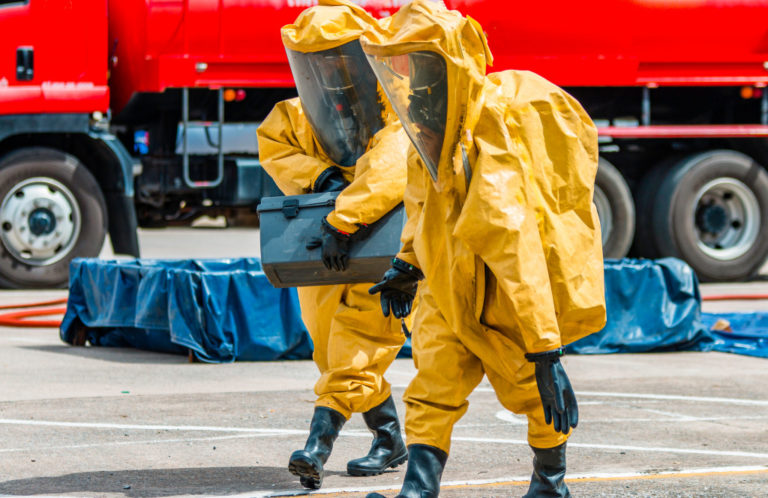Not all glamorous-sounding job titles give you a glamorous life — or health. A med-tech, for one, deals with various human specimen daily, including infected droplets or blood. Nowadays, they’re constantly exposed to the COVID-19 virus, putting their lives at risk.
The same goes for contractors and manufacturing officers. Their jobs aren’t just overseeing operations. They also ensure that their workplace is safe and healthy for everyone. That means they also monitor how the wastes in their facilities are disposed of.
If you’re in the healthcare, construction, or manufacturing industry, the wastes that you deal with are potentially deadly. Your risk for acquiring diseases may even be higher if you’re in a lower position since you’re directly exposed to the wastes. It’s hard to love a job that puts your health on the line, no matter how high it pays or how many people it helps. At the end of the day, we worry about ourselves the most, after all.
Plus, getting sick can complicate things in your workplace. Someone would have to fill in for you, you lose productivity, and cut down your payments if you don’t have sick leave. Your personal life can get messed up, as well; paying for treatment won’t be easy if your medical service isn’t covered by your insurance, for example.
So here’s the dark side of working in industries with hazardous waste, and how to stay 100% healthy in it:
Healthcare Waste
There are eight types of waste in the healthcare industry, identified below along with examples for each:
- Infectious: discarded diagnostic samples such as blood and bodily fluids; autopsy waste, used swabs, bandages, and disposable medical devices
- Pathological: human organs, fluids, body parts, and tissues
- Sharps: used syringes, needles, and disposable operating apparatuses
- Chemical: lab agents, such as mercury in broken thermometers, batteries, and the like
- Pharmaceutical: expired, contaminated, or used vaccines and drugs
- Cytotoxic: cytotoxic drugs for cancer and such
- Radioactive: radioactive diagnostic materials and radiotherapeutic materials
- General: wastes that don’t pose threats to human health
World Health Organization (WHO) recommends a color-coding strategy for segregating healthcare waste. Highly infectious waste should be color-coded yellow, with the label “HIGHLY INFECTIOUS”. The waste should be contained in a strong, leak-proof plastic bag or something that can be autoclaved.
Yellow is also the color code for sharps and pathological wastes. They should be kept in a puncture-proof container and leak-proof plastic bag, respectively. Chemical and pharmaceutical wastes are color-coded brown, and go should in a plastic bag or bin.
Radioactive waste isn’t color-coded. Rather, they’re simply identified by the radioactive symbol, which should be on a lead box. Finally, general wastes are just collected in a black garbage bag and transported by efficient trash can dumpers.

Construction Waste
Construction workers, contractors, engineers, and other professionals involved in a construction project are at risk for exposure to and contact with the following hazardous waste:
- Asbestos
- Chemicals
- Batteries
- Solvents
- Pesticides
- Oils
- Ozone-depleting substances and general waste
You can ingest these wastes through inhalation because their particles linger in the air. Protect yourself and your workers by wearing personal protective equipment (PPE) and segregating your waste properly. Put labels on your bins, and use waterproof covers to prevent hazardous runoff from contaminating your site.
Manufacturing Waste
The type of hazardous waste produced by manufacturing companies depends on the product being manufactured. Generally speaking, though, they generate the following wastes often:
- Acetone, alcohols, volatile organic compounds (VCOs), and xylene
- Petroleum distillates, pigments, and wastewater
- Mineral spirits
A policy that prevents expiration is the way to treat and dispose of these wastes. The first products bought should be the first ones to be used. A registered hazardous waste transporter should collect them afterward. Recyclable wastes should be identified and sorted, and toxic solvents can be replaced with less hazardous ones.
Staying Healthy
Hazardous waste has human health and environmental impacts. If you’re frequently exposed to them, your skin may get irritated, your respiratory system can become weak, and you may develop a serious disease. Asbestos, for one, is notorious for causing lung cancer. Human specimen, no doubt, passes infections like COVID-19. And chemical waste can produce greenhouse gases that deplete the ozone layer.
So no matter how high-paying the jobs in those three industries are, don’t forget that your success in it can mean an illness in the future. Stay healthy by following your company’s protocols, or improving them if they have loopholes or inconsistencies. Live a healthy lifestyle as well to boost your immune system. The healthier you are, the less likely you are to get sick from viruses and other wastes.
Check your household products as well. Chances are the ones used in the manufacturing industry come in household variants, too. Opt for environmentally-friendly and health-safe alternatives. Given the effects of COVID-19, we don’t need another illness that can escalate into even an outbreak. Plus, if your industry promotes proper waste handling, more will follow, and therefore reduce their carbon footprint.

